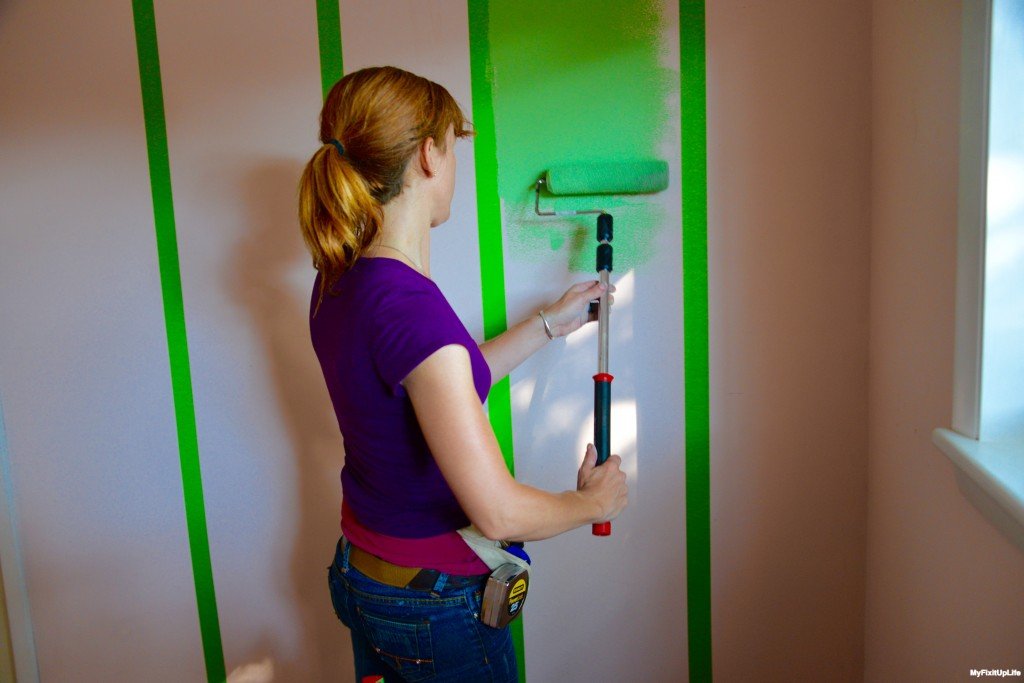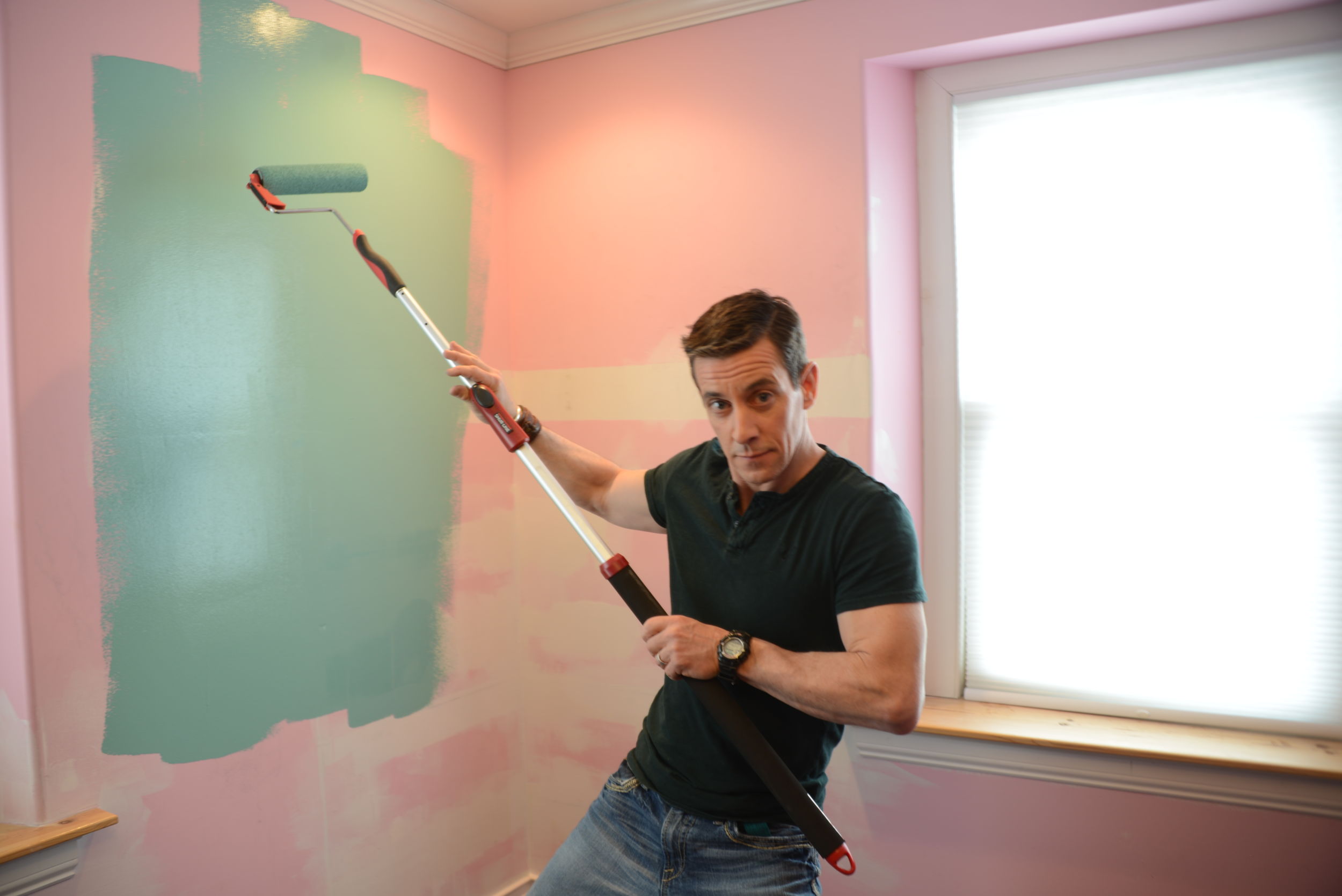I’m often inspired to a paint a room in our home. More often than my husband, who would rather have a hammer or saw in his hands than a paint brush.

A fresh coat of paint can transform a space. Color can update the look to suit your current decorating mojo or mood, and it can inspire and comfort us.
But we often are asked a fundamental question that has nothing to do with how to paint, it’s what should I paint first?
Like painting, every DIY project needs a plan. When we paint, we have a painting sequence that has proven successful.
Selecting the color.
The first part is selecting the color. This can be easy-sh, if you are captain color confident and no one is around who has to agree.
If you aren’t sure what color to choose, we recommend putting a few paint chips on the wall. Grab a handful of likely candidate chips from the paint store, and put them on the paint-intended wall at home. Live with them for a while, see how the light hits it and how the furniture affects the color. The other colors in a room can actually change the way a paint color looks.
If you are still stuck between a few choices, you also can try out a few larger samples on your wall. Many paint stores sell tiny samples of paint, which can help to see how the actual color looks in your room at every time of day.
If you select a color that doesn’t work, it’s just paint. It takes time and money, but you can easily fix it with another can or two of paint.
Painting sequence.
Committing to a sequence is helpful when painting a room. It makes the job more efficient, and it allows a DIY painter more easily share the duties with a DIY pal.
Here’s the sequence we often use:
First, we paint the trim first, over-painting onto the walls/ceiling.
Then, we cut in the ceiling, and roll out the ceiling.
Next, it’s time to cut in the walls to the trim, and roll out the walls.
The last part of the painting sequence is the extra bit of fun, like a mural or a pattern for a feature wall. We’ll wait for the wall paint to fully cure before doing this step.
How do you paint a room? We’d love to know if you have a different strategy that works for you.



